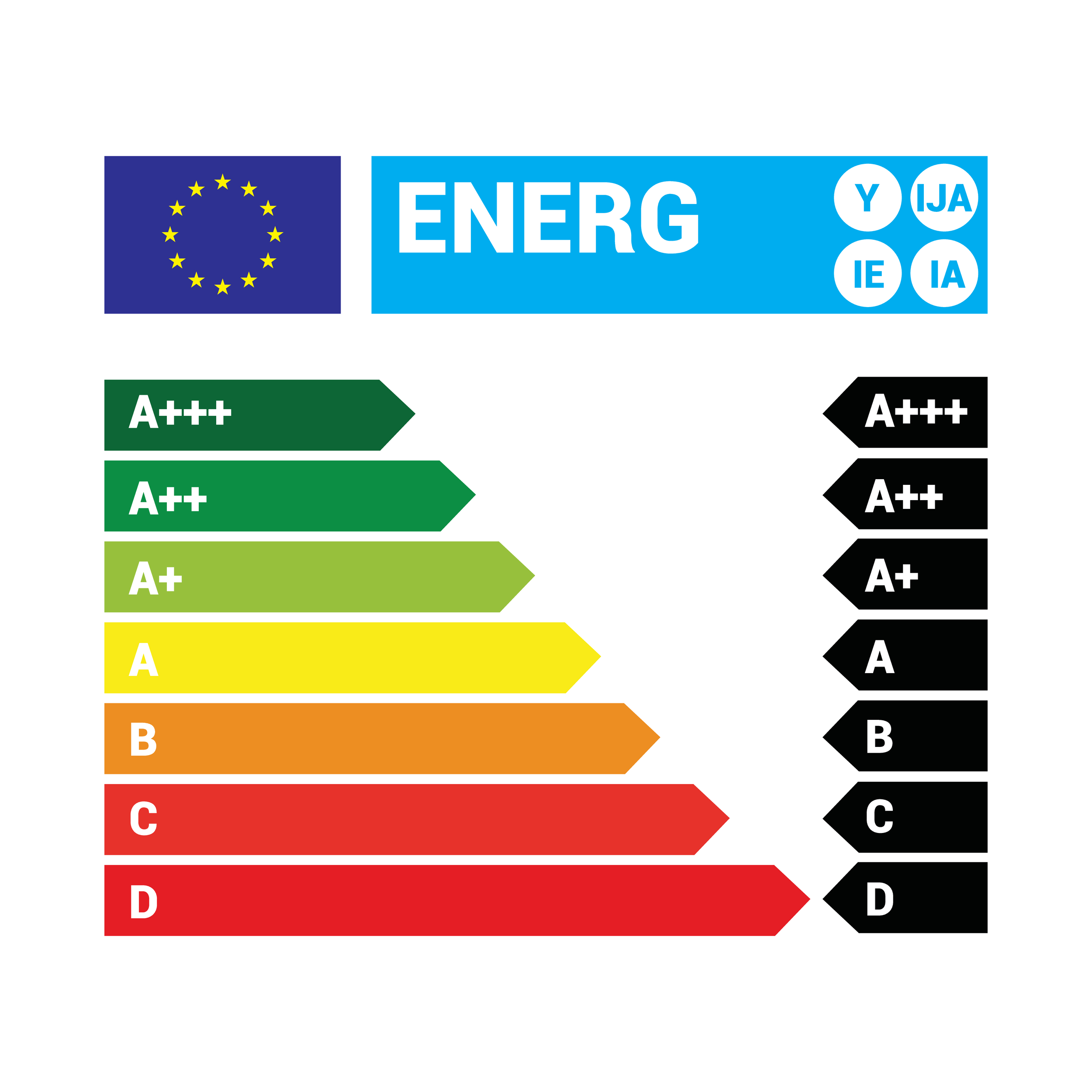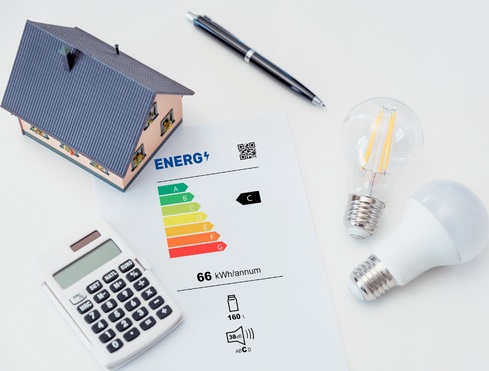So, you’ve just bought a shiny new washing machine. Or maybe a flashy HD TV. You’ll probably just want to get on and start using it. But look closer and you’ll hopefully see a little rainbow-like sticker on the top or front of it. This label is the product’s energy label and it’s full of useful information. Information that’s available at the point of sale too — there to help you decide if you want to buy it in the first place.
But why is it important to know the energy a product uses? Not all home appliances and products are built the same. Different models of the same appliance type use varying amounts of energy. But it’s useful for you to know, as the one that uses the least energy will save you the most on your energy bills.
A range of electrical household products in the UK are given an energy label that provides you with valuable insights. It’s a rating system that’s been in place across both the UK and Europe for more than 25 years.
The energy labels also help in other ways. You might be sensitive to the impact of the emissions your home appliances produce and your overall carbon footprint. It encourages manufacturers to research and develop more environmentally friendly product lines too.
We’re going to take a closer look at UK energy rating labels. We’ll see what they’re used for and how they’re determined for different products.
UK energy labels and how to read them

Energy labels start from a short green bar labelled ‘A’ and cascade down through the rainbow (and alphabet) to a long red bar, labelled ‘G’. This scale represents the product’s energy consumption. The green bar being the most efficient and red the poorest.
Revisions to UK energy labels
The energy label guides consumers and professional buyers in choosing the most energy efficient products. It also spurs manufacturers and retailers into producing more innovative and effective products.
Up until March 2021, the labelling scheme was slightly different. The top grade of A was made up of A+++, A++ and A+ and extended down to G. However, as demand for more environmentally friendly options increased, products began to reduce their energy consumption.
As such, the original labelling scheme became less effective as more products achieved the top A ratings. Consumers found it more difficult to identify the most energy efficient products. So, the label was revised and updated with a simplified range of A to G. This made the A grade less easy to achieve and therefore increased its value as a beacon of energy efficiency.
Other features updated on the new label include a new QR code, allowing the user to view more product information on their smartphone. The icons from the old labels remain but have been updated with more detail — the spinning efficiency of a washing machine, for example.
What do UK energy ratings apply to?
Energy ratings don’t just apply to things like dishwashers, fridge freezers and TVs though. They’re also used on lighting and homes themselves.
If you’ve bought, sold, or rented out a property before, you’ll have seen that Energy Performance Certificates (EPCs) are legally required.
Home Energy Performance Certificate (EPC)
An EPC shows the energy efficiency rating and the environmental impact rating of a property. The rating is based on how much energy a property uses per square metre, through heating and lighting. It also considers how much energy it loses through things like poor insulation. The assessor will calculate the property’s Standard Assessment Procedure (SAP) score. This is a government procedure used to determine the EPC rating. A higher SAP score means a better EPC.
The certificate is divided into different sections. The first section has general information relating to the property. This includes the address, the floor area in square metres, and the date of the energy performance assessment.
Beneath this is the section that tells you how much it would cost to run heating, hot water, and lighting in the property over 3 years. You’ll also see the potential reduced costs if the property’s energy efficiency was improved over 3 years and future savings. The cost of running home appliances isn’t included.
It then shows the Energy Efficiency Rating. Like the A — G scale found on products and appliances, it shows how it performs in energy efficiency. But it also shows, if energy efficiency measures were undertaken, what the potential rating of the property could be.
Lastly, suggested improvements are shown at the bottom. Often these will relate to improved insulation and possible cost savings over 3 years.
Find your EPC
Since their introduction in 2007, it’s been a legal requirement to produce an EPC when a property is built, put up for sale or let. As a homeowner, it’s easy to forget these even exist if they’re tucked away in paperwork somewhere. You may be unaware that you already have free advice ready to act on to improve the energy efficiency of your home.
If you’ve lost your EPC, don’t despair. All certificates created since 2007 are freely available online to anyone who’s interested. Even if it’s not your home, you might want to find out the energy rating of a public building. You can search for a certificate by postcode, street name and town, or certificate number.
Have a look now to find an energy performance certificate.
Appliance energy ratings
You’ll find energy labels on the following products:
- Washing machines, washer dryers
- Tumble dryers
- Fridges, freezers, and fridge freezers
- Dishwashers
- Electric ovens
- Televisions and electronic displays
- Energy-saving light bulbs
- Wine storage refrigerators
- Air conditioners
As home appliances and other products differ in their functionality it’s not possible to apply the same energy efficiency testing for a dishwasher as you would to an electric oven.
The testing to determine a product’s energy rating focuses on its parts, performance, and technology. Let’s look at how some of the products are given their energy labels.
Our blog is loaded with more related articles

Energy saving tips
How to save energy at home in winter
The changes we’re suggesting are so small, you’ll forget you’ve made them — that is until you check you...
Read more

Energy saving tips
How to make your home more energy efficient and save money
In a world where climate change regularly hits the headlines, taking steps to reduce the energy you use and be more environment...
Read more

Energy saving tips
Getting energy saving smart with smart tech
Using smart-tech devices to get smart with saving water, energy and money day to day.
Read more
